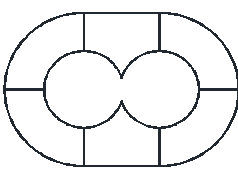Tensile Strength Testing Equipment for Fabrics in China
Understanding the Tensile Strength of Fabrics The Role of Chinese Fabric Testers
In the textile industry, the tensile strength of fabrics is a critical parameter that determines the durability and usability of textile materials in various applications. The ability of fabrics to withstand pulling forces without breaking is essential for ensuring that they can endure everyday wear and tear, especially in manufacturing clothing, upholstery, and industrial materials. As one of the largest textile-producing countries in the world, China plays a significant role in this field, particularly through the use of advanced fabric testing equipment.
Tensile strength is defined as the maximum amount of tensile (pulling) stress that a material can withstand before failing or breaking. Measuring this property lets manufacturers and designers understand how a fabric will behave under stress, which is crucial for quality control and product development. The testing process typically involves using a fabric tensile strength tester, which applies a controlled force to a sample of the fabric until it either stretches to a point of breakage or deforms permanently.
Chinese fabric testers are known for their precision and reliability, making them essential tools in the textile industry. The design and functionality of these testers have evolved significantly, integrating modern technology to provide accurate and reproducible results. Many Chinese manufacturers produce tensile testing machines that comply with international standards such as ISO 13934 and ASTM D5034, ensuring that results are comparable across different testing environments and crucial for global trade.
One of the key advantages of using Chinese fabric testers is their capability to perform various types of tensile strength testing, including both single and multipurpose tests. These machines can measure the tensile strength of different fabrics, whether woven, knitted, or non-woven. Furthermore, they can be equipped with various attachments and modules that allow for additional tests, such as tearing strength measurement, elongation at break, and other mechanical properties of textiles.
china tensile strength of fabric tester

Moreover, the integration of automated systems and data analysis software in modern fabric testers has transformed the testing process into a more efficient operation. With features like real-time data acquisition, users can monitor the testing process and receive immediate feedback on the tensile strength and other relevant properties of the fabric specimen. This not only speeds up the testing process but also enhances the accuracy of the results.
The importance of understanding tensile strength extends beyond mere measurement; it is also about the implications for product development and quality assurance. For instance, in the apparel industry, robust tensile strength contributes to making clothing that can withstand movements and stresses without tearing, thereby increasing customer satisfaction and reducing the likelihood of product returns.
In addition to the manufacturers and designers, other stakeholders such as retailers and consumers also benefit from reliable tensile strength data. For retailers, having access to information about the quality and durability of fabrics helps them make informed decisions when sourcing products. Consumers, on the other hand, can trust that the clothing and textiles they purchase will meet expectations for longevity and performance.
In conclusion, the significance of tensile strength testing in the fabric industry cannot be overstated. With China's advanced fabric testing instruments and technologies, manufacturers can ensure that their products meet international standards for quality and durability. As the demand for high-quality textiles continues to grow globally, the role of precise and dependable fabric testers will remain pivotal in shaping the future of the textile industry, fostering innovation, and enhancing user satisfaction in diverse applications.
-
Why the Conductor Resistance Constant Temperature Measurement Machine Redefines Precision
NewsJun.20,2025
-
Reliable Testing Starts Here: Why the High Insulation Resistance Measuring Instrument Is a Must-Have
NewsJun.20,2025
-
Flexible Cable Flexing Test Equipment: The Precision Standard for Cable Durability and Performance Testing
NewsJun.20,2025
-
Digital Measurement Projector: Precision Visualization for Modern Manufacturing
NewsJun.20,2025
-
Computer Control Electronic Tensile Tester: Precision and Power for the Modern Metal Industry
NewsJun.20,2025
-
Cable Spark Tester: Your Ultimate Insulation Assurance for Wire and Cable Testing
NewsJun.20,2025
 Copyright © 2025 Hebei Fangyuan Instrument & Equipment Co.,Ltd. All Rights Reserved. Sitemap | Privacy Policy
Copyright © 2025 Hebei Fangyuan Instrument & Equipment Co.,Ltd. All Rights Reserved. Sitemap | Privacy Policy
